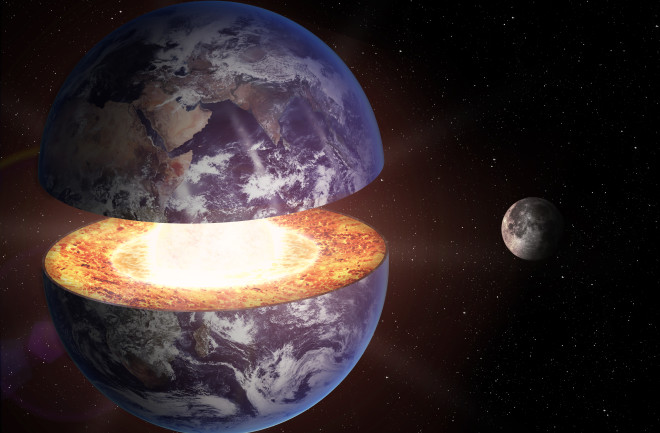The final frontier isn’t space: It’s the Earth itself. We’ve sent people to the moon, robots to Mars and the New Horizons space probe 3.26 billion miles from Earth to snap photos of Pluto, while just 4,000 miles beneath our feet, unfathomable heat and pressure keep the center of the Earth tantalizingly out of reach. But scientists have been able to puzzle out what’s inside the Earth — including olive-green crystals and a roiling sea of melted iron — by studying meteorites, volcanic eruptions and the seismic waves from earthquakes.
“We go and explore other planets, but in many ways, going inside the Earth and figuring out what's inside the Earth is actually technologically harder than going into space,” says Vedran Lekić, a seismologist at the University of Maryland.
There are four main layers to the Earth: crust, mantle, outer core and inner core, along with transition zones between these layers. The world we know lies on tectonic plates making up the Earth’s crust, which varies in thickness from three miles to over 40. Beneath the crust lies the mantle, the layer of rock making up 84 percent of the Earth’s volume. The rocks in the upper mantle are white-hot, but if you could cool them to room temperature, they’d be a speckly olive green thanks to the mineral olivine — you might know it as the August birthstone peridot. “I think the mid-upper mantle would be gorgeous, because it would be olivine green, like 60 percent, and it would also have garnets, these beautiful red cubic minerals,” says Wendy Mao, a mineral physicist at Stanford University.







